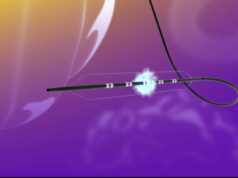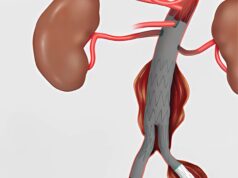A presentation by principal investigator Eric J Dippel of Genesis Heart Institute in Davenport, Iowa, USA, at the annual New Cardiovascular Horizons conference (28–30 May; New Orleans, USA) demonstrated significant procedural advantage of laser atherectomy in the largest randomised trial of atherectomy ever conducted.
The Excimer laser randomised controlled study for treatment of femoropopliteal in-stent restenosis (EXCITE ISR) showed a 93.5% procedural success rate with laser atherectomy plus percutaneous transluminal angioplasty for the treatment of in-stent restenosis versus 82.7% with percutaneous transluminal angioplasty alone.
These findings, which are confirmed by an independent core lab and currently under US Food and Drug Administration (FDA) review, represent the first randomised, multicentre clinical trial results demonstrating the benefits of atherectomy in in-stent restenosis. Study results also show a lower major dissection rate (2.4% vs. 7.4% with percutaneous transluminal angioplasty alone) and additional stenting (4.7% vs. 13.6% with percutaneous transluminal angioplasty alone).
According to Amanda Johnson, vice president of Regulatory and Medical Affairs for The Spectranetics Corporation, which sponsored the study, “It is remarkable to see these superior clinical outcomes, affirming the exceptional performance of laser atherectomy. This is critical to elevating the current standard of care for patients suffering from peripheral artery disease. The findings generate new insights and more complete evidence to enable physicians to determine which treatment options are best for their patients.”
“Notably, the average lesion length was nearly 20cm in both arms, indicative that this was a true real-world study as opposed to some of the stent IDE studies with average lesion lengths of four to six cm,” Dippel points out. “In addition, approximately three times as many patients in the laser arm presented with severe calcification as compared to the angioplasty arm.”












